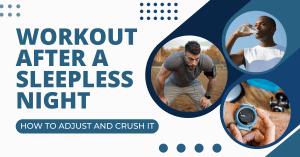It wasn’t so long ago that the only “wearable tech” you needed for training was a digital stopwatch. Now, GPS is practically mandatory if you want to get accurate splits during your workouts and races.
On top of that, there’s a slew of new wearable devices that claim they can improve your running form and help your performance. These devices range from shoe-mounted foot pods to waist clips and even “smart shorts.”
There’s no denying it—wearable tech is here to stay. But, unlike GPS watches, which give plain and easy to interpret numbers, the latest batch of wearable devices offer a dizzying array of data on everything from vertical oscillation to cadence to pronation.
But the 2 most important questions are: do these numbers matter, and can you put them to use to improve your performance or prevent injury?
In this article, we’ll take a look.
What data can you get from a running-focused wearable device?
The technology that powers today’s wearable devices is pretty simple—they’re all based on tiny chips that measure acceleration and rotation.
With the right data processing techniques, you can (in theory at least) deduce useful information like speed, cadence, and running biomechanics from raw acceleration and rotation data.
Thanks to the new Bluetooth low-energy standard, wearable tech can offload the data to your GPS watch or your smartphone to do the number crunching.
Speed and distance
The cheapest and simplest wearable devices, like the MilestonePod (now known as Zwift) and Garmin’s Foot Pod are popular for estimating running speed during treadmill or track sessions.
While modern GPS watches can often measure speed with <2% error (1), GPS watches resort to rough estimates when GPS signals are unavailable. Your watch may try to estimate your speed based on your arm swing, but these estimates tend to be much less accurate than a foot pod.
Cadence
Your stride frequency, or cadence, is easily and reliably measured with a foot pod or waist clip like the Lumo Run or the Garmin Run Dynamics Pod, but for most runners, a GPS watch can accurately estimate cadence just from your arm swing.
Watch-based estimates of cadence tend to fail if you are carrying a cell phone or water bottle, or if you run slowly and tend not to use your arms very much.
In these cases, a foot pod or waist clip can still reliably measure cadence, as the shock from hitting the ground is stronger at your foot and waist.
Biomechanical metrics
In a competitive market, every wearable device is clamoring to deliver new, better, or exclusive biomechanical metrics, whether it’s your footstrike type, impact shock, ground contact time, or asymmetry index.
As for what these numbers actually mean and how to interpret them, this is where things get confusing.
We’ll need to take an in-depth look at interpreting biomechanical data from a wearable device.
Two key questions about biomechanical data from wearable devices
When examining the biomechanical data delivered by a wearable device, two questions immediately arise:
- First, are these numbers accurate?
- And second, are they useful?
Biomechanics research has started to tackle these questions, but unfortunately, there aren’t always straightforward answers.
Are the numbers accurate?
When it comes to accuracy, only some of the wearables on the market have been validated against real biomechanics lab data. Does the “pelvic drop” or “vertical oscillation” measured by a device correspond to what we’d measure in a 3D motion capture lab?
Too often, we just don’t know the answer to these questions.
Some metrics from devices like the MilestonePod and Garmin’s suite of heart rate monitors have been validated using lab data, but this doesn’t apply to every device on the market (2,3).
Moreover, these validation studies are pretty small. There’s a very real possibility that these devices could be off for runners who are older, overweight, or who have unusual gait patterns.
Are the numbers useful?
Even if your waist clip does measure your vertical oscillation or left-right asymmetry accurately, should you do anything to change your running form if these numbers are flagged as “too high” by the device’s software?
Here, the data we can get from wearable devices is far ahead of our knowledge about running injuries.
Many of the metrics touted as important for injury, like pronation or impact peak, are extraordinarily controversial among biomechanics researchers.
Impact-related metrics, for example, don’t actually correlate at all with the internal forces that your body experiences at common running injury locations, like your shin or your knee (4,5).
There are a few exceptions to this general trend.
Having an abnormally low cadence has been linked to injury with fairly good consistency, and new research indicates that high vertical oscillation might be correlated with worse running economy (6,7).
However, it remains to be seen whether using a wearable device to monitor and change your cadence or your vertical oscillation actually leads to measurable changes in injury risk or running economy for you.
What’s on the horizon for wearable tech in running?
Despite the limitations of wearable devices right now, there is some promising evidence that feedback from wearable data could one day help you avoid injuries.
Research on gait retraining using wearable devices has shown some promising results, and companies like Garmin and Lumo Run are collaborating with some of the top biomechanics research groups in the world to connect wearable data with injury risk.
Consumer-grade wearable devices are being used in large-scale studies on injuries in cadets at West Point, NCAA cross country runners, and recreational runners who upload their data to websites like Strava and Garmin Connect. In the next few years, we should start getting some groundbreaking results on which variables matter for injury, and which ones don’t.
Conclusion: what can a wearable device do for you today?
By far the most useful information you can get from a wearable device are the simple things: speed, cadence, and distance covered.
Your training volume and intensity are probably the biggest factors that determine your injury risk anyways.
In terms of biomechanical data, the numbers we can get from commercial devices far outstrip the injury research right now—we aren’t sure if the data is comparable to what we can measure in the lab, and even if it is, metrics like ground contact time, pronation, and left/right asymmetry haven’t been reliably linked to injury.
A few exceptions exist to this rule:
- Cadence is easy to measure accurately, and a low cadence is known to be associated with greater injury risk.
- High vertical oscillation, at least measured in the lab, might be related to worse running economy too.
Even so, changing these variables is still a gamble—if your training has been going well and you’ve been relatively healthy, you should be hesitant to make any changes to your running form, no matter what a smartphone app says.
Our advice?
Have fun looking at the data if you’re a numbers or running geek like us, but don’t try and make any changes to your bio-mechanics based on the data unless you know for sure the change will reduce injury risk (usually after consulting with a bio-mechanics expert, not a YouTube video or magazine article)








